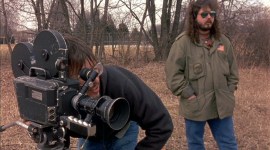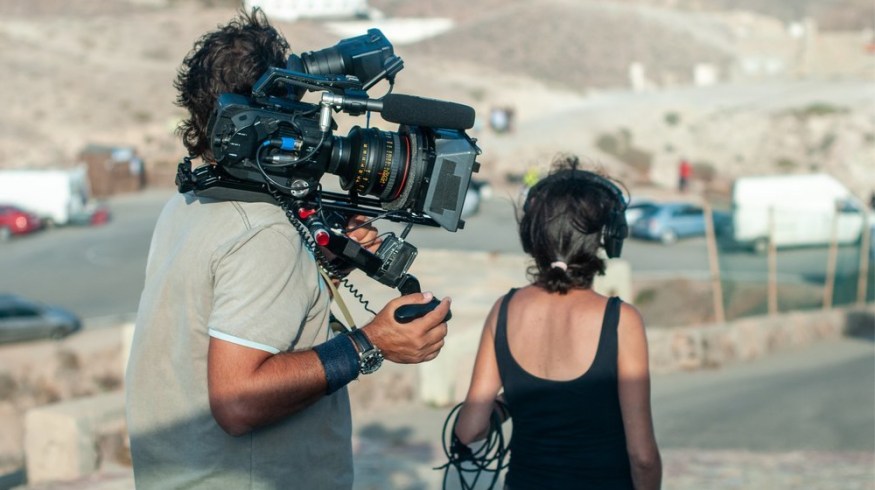
5 Documentary-Style Lenses for 5 Different Budgets
To find the perfect documentary-style lenses for your next project, we’ll look at five of the top lenses across multiple budget ranges.
For documentary filmmakers, choosing the right lenses for your project can determine whether or not you get the shots you need to tell your story effectively.
Do you need autofocus? What focal lengths are the best to have on hand? These choices can make or break your shoot, especially if you’re also directing. That’s why it’s so important to choose the perfect documentary-style lenses.
Let’s look at five you should consider . . .
1. Sigma 18-35mm F1.8 – $800 RRP
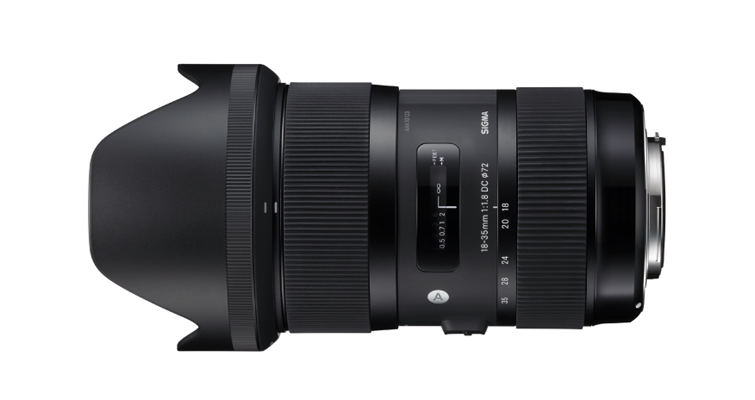
Okay, yes, this lens came out in 2013, but don’t be alarmed by its age. It’s truly a beautiful piece of glass. It offers a full F1.8 throughout its focal lengths with a lovely buttery-smooth damped focus and zoom ring, a solid and well-built construction made out of all metal, besides its rubbery texture on the rings.
One of the reasons why I feel it deserves its place on the list isn’t because of its popularity, but rather, its price. You’ll see a lot of owners of the lens hold onto it whenever they’re switching to a new system. They opt for lens adaptors due to their consistent focus and tack sharpness. Sigma also released a Cine version of this lens which used the same optics but just housed it in a new body.
Although it was designed for APS-C sensors, indie filmmakers often use this on cameras such as the C300 Mark III, Blackmagic Pocket 6K Pro, etc.
The best part is the price. At only $800, this thing is not only affordable but an excellent investment if you’re looking for bang-for-buck performance.
Sigma 18-35mm f/1.8 specs:
- APS-C format
- 28.8-56mm (35mm equivalent)
- Aperture range: f/1.8 to f/16
- Five SLD elements
- Four aspherical elements
- Super multi-layer coating
- Hyper Sonic Motor AF System
- Rounded 9-blade diaphragm
2. Canon EF 24-70mm f/2.8L II USM – $1,899.99
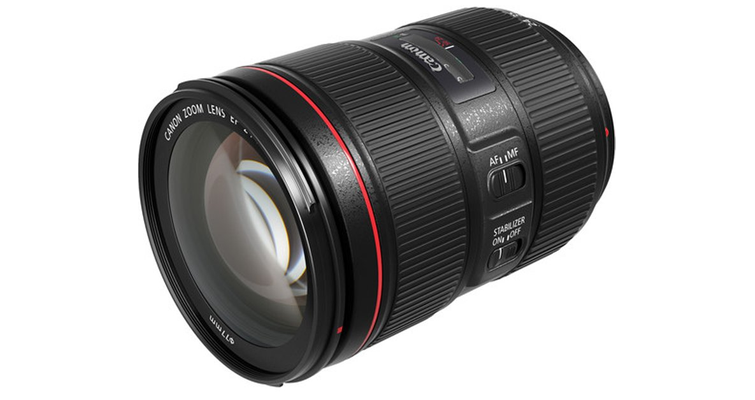
Renowned for being one of Canon’s most popular lenses with filmmakers, the Canon EF 24-70mm lens has near-perfect optics. It has a silent but deadly fast autofocus system, excellent build quality, weather sealing, and it’s super-sharp when wide open at f/2.8.
What more could you ask for?
Compared to its rivals, such as Sigma, it’s quite pricey and can offer the same focal length and aperture. However, putting this lens onto a full-frame body and seeing what it offers optically, you can see why the price is higher.
The Canon EF 24-70mm lens produces the pro-level grade optics you’d expect from an L series lens.
If you don’t mind the lack of image stabilization within the lens (the 24-105mm L has this feature built-in) and the Canon price tag, the 24-70mm f/2.8L II USM is a true workhorse of a lens and will be glued to your camera for many years to come.
If you need that extra focal length and don’t mind sacrificing the aperture to f/4, I highly suggest looking at the Canon EF 24–105mm f/4L IS II USM.
Canon EF 24-70mm f/2.8L II USM specs:
- RF-mount lens/full-frame format
- Aperture range: f/2.8 to f/22
- Three aspherical elements
- Three ultra-low dispersion elements
- Air sphere and fluorine coatings
- Nano USM AF system
- Optical image stabilizer
- Customizable control ring
- Rounded 9-blade diaphragm
3. Canon CN-E 18-80 T4.4 – $4,600
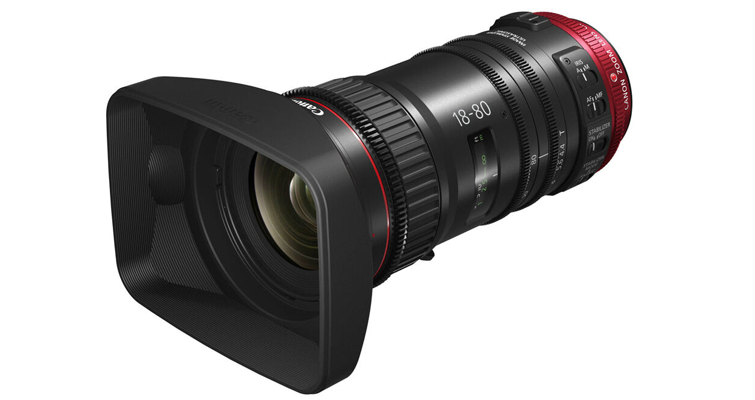
Now, we’re getting into some serious cinema lens territory—this is something a little more than Canon L series lenses. The Canon CN-E 18-80 T4.4 is a workhorse among documentary-style lenses. It holds focus throughout the zoom range with precision, never missing the mark.
In my opinion, it gets dismissed too quickly by filmmakers for its slow aperture speeds at f/4. Many agree the benefits outweigh that issue.
Upon reviewing footage from this lens, you quickly realize the beautiful imagery it yields. It has admirable features—a constant aperture, fantastic focal range, and even image stabilization.
Released back in 2016, the CN-E18-80mm T4.4 is quite dated compared to its competitors, which may put people off. But, that shouldn’t stop you from trying this lens.
If you’re a one-person crew and need something lightweight, small, and compact, this is an excellent recommendation for any documentary work.
Canon CN-E 18-80 T4.4 specs:
- Covers Super 35 & APS-C formats
- EF mount
- T4.4 constant maximum aperture
- 9-Blade Iris
- Parfocal with minimized focus breathing
- Compatible with Servo lens controllers
- Optional control grip
- Image stabilization & auto focus support
- 180° rotation for focus
- Lightweight at only 2.65lbs
4. Canon CN7x17 KAS S Cine-Servo 17-120mm T2.95 – $23,850
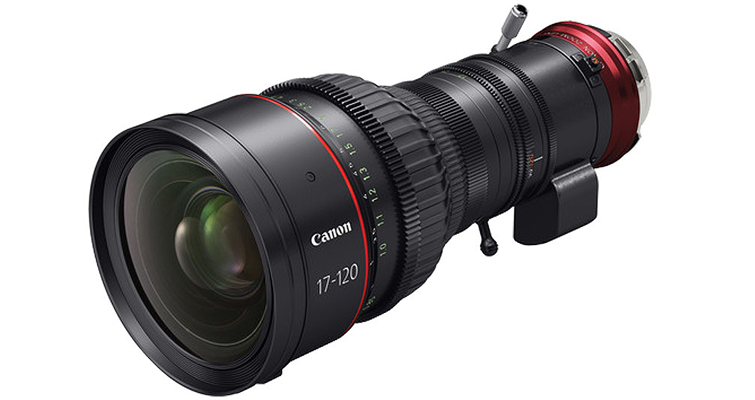
Over the past few years, Canon has established itself as a solid manufacturer of documentary-style lenses for filmmakers. Canon offers such a wide range of lens options. Its most solid and broad-use documentary offering would be the 17-120mm.
Released back in 2014, this lens’ long-range and fast aperture makes it a must-have part of your camera kit—if budget allows. I’ve personally been able to use this lens on several projects, and the range it offers always impresses me—as does its beautiful cinema optics.
For documentary shooters, it’s a beauty because it can do the work of multiple lenses. That makes the Canon CN-E 17-120mm ideal for any work. You wouldn’t need to change lenses with this much focal range and control.
This isn’t a lens I’m expecting everyone to go out and buy, since it’s aimed toward broadcasters and professional cinematographers. But, if you can get access to it via a rental or happen to be on set with one, you’ll see it’s one of the most well-rounded, well-built lenses within Canon’s CN-E line.
Canon CN-E 17-120mm T2.95 key specs:
- ENG-style zoom, focus, and Iris Servos
- For broadcast or cinema shooting styles
- 180° focus ring with knurled grip
- Double focus markings in feet and meters
- Zoom speed: 0.5 to 300 seconds
- Angle of view shift suppression
- Detachable drive unit
- Electronic lens mount & 12-pin connector
- 11-blade aperture design
- Covers up to Super 35mm-sized sensors
5. Angenieux Optimo 28-76mm f/2.4 — T2.6 – $41,1800

If you’ve ever had the opportunity to use an Angenieux zoom lens, you know just what a treat they are. They’re incredibly sharp and render colors beautifully. Simply put, they’re exceptional documentary-style lenses. It’s hard to beat what Angenieux offers regarding high-end professional lenses.
This is a lens that takes a project to the next level. If budget is of minimal concern and you genuinely want the best of the best, then an Angenieux zoom lens is exactly what should be on your gear list.
Angenieux Optimo 28-76mm f/2.4 — T2.6 key specs:
- Covers Super35 sensor size
- 2.7x zoom ratio
- PL mount with optional mounts available
- f/2.4 to T2.6 aperture
- 2′ minimum focus distance
- Weighs 4.2lbs
- 114mm front diameter
- 0.8 gear teeth on focus, iris, and zoom
Overall, there are many fantastic zoom lens options for documentary filmmakers—both affordable and insanely expensive. You have a broad spectrum of lenses to fit your budget or needs. Image quality, features, materials, and build quality all play key roles in each one of these lenses.
Fortunately, no matter your budget, you can find fantastic options that fit your needs. Remember, if you can’t afford to outright buy a lens, consider rentals instead.
For more documentary tips and advice, take a look at these articles:
- The 5 Tenets of Capturing Good B-Roll for Your Documentary
- Kid Candidate: How a Viral Video Campaign Launched a Documentary
- Documentary Tips for Filming Undercover and Undetected
- Holistic Breakdown: How to Edit a Documentary Film
- Documentary Trends: Using Aerial B-Roll to Help Tell Your Story
Cover image via Jonas Torres.




